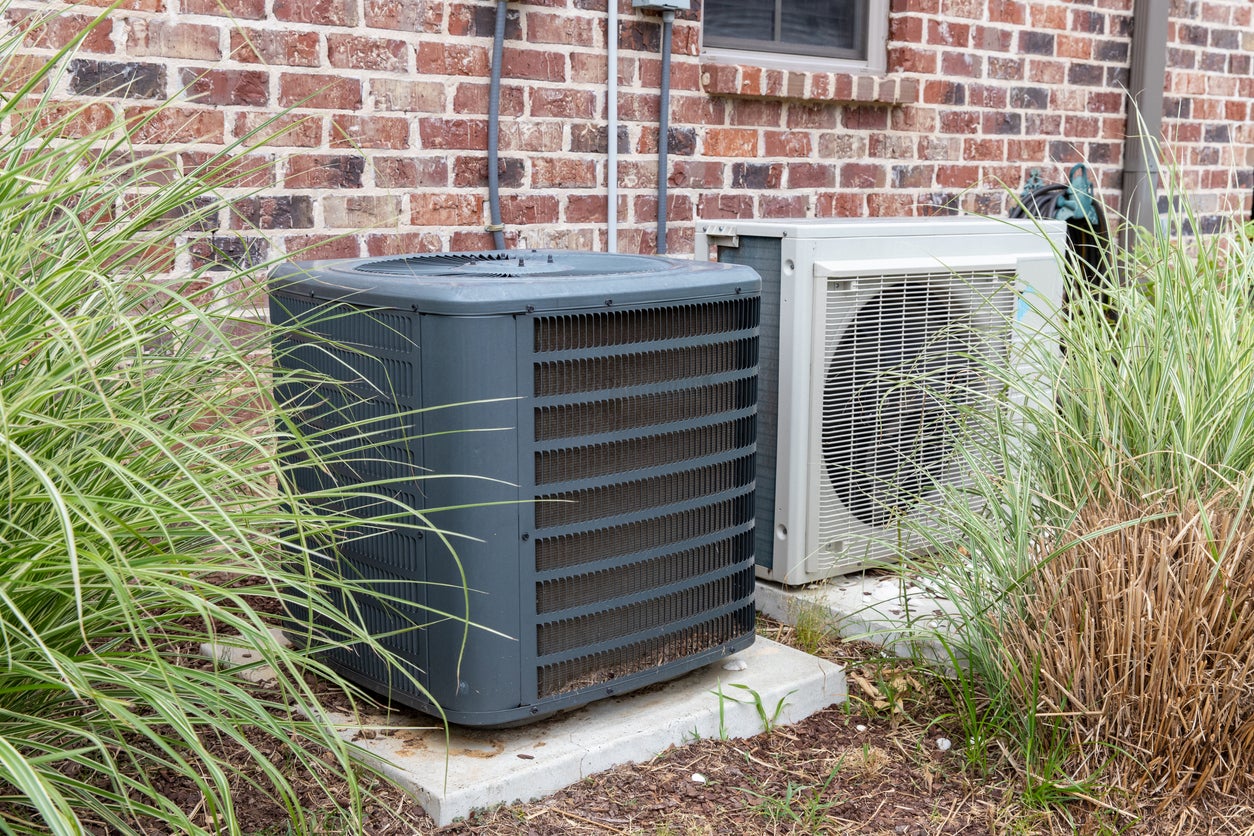Air Conditioner Landscaping – How Far To Plant From An AC Unit


Central air conditioning is a standard feature in many homes today. In addition to the evaporator hidden inside the home, a condensing unit is placed outside of the house. As these big, metal boxes are not very attractive, many homeowners wish to hide or camouflage the outside portion of the air conditioner. Landscaping can do just that!
How Far to Plant from an AC Unit
Did you know that properly implemented air-conditioner landscaping can make your condensing unit work more efficiently? When situated in direct sunlight, the condensing unit is less able to dissipate heat removed from the house. Thus, the air conditioner must work harder to keep the house cooler.
Obstructing the air flow around the unit has a similar effect. Crowding plants too near the condenser can result in higher repair costs and reduce the life of the AC. The key is to provide shade to the condenser, but maintain proper airflow.
Many manufacturers recommended a minimum clearance of 2 to 3 feet (61-91 cm.) around the sides of the condenser and at least 5 feet (1.5 m.) over the top. Specific recommendations for your AC model can be found in the owner's manual. Also, allow sufficient space around the air conditioner for a technician to easily access the unit.
What to Plant Near AC Unit
When designing air conditioner landscaping, the goal is choosing suitable plants that can grow near an AC condenser unit:
- Select plants with an upright growth habit, such as arborvitae. Plants which spread outward can quickly overtake the recommended clearance zone.
- Consider growth rate and maturity size when selecting plants. Privet can grow 2 feet (61 cm.) per year, making trimming a routine chore. Opt for slow-growing species when planting landscape around an air conditioner.
- Avoid plants which create a lot of debris, like deciduous azaleas. These beautiful shrubs drop small petals and leaves which collect in and around the condenser. Likewise, debris from overhanging flowering, fruiting or pod-forming trees can fall inside the unit.
- Plants with thorns (like roses) or sharp leaves (like holly) make it uncomfortable for your AC technician to work on the condenser. Choose plants with soft foliage, such as lamb's ear.
- Bees and wasps like to build nests inside condensing units. Don't attract stinging insects with flowering pollinator plants like bee balm or ageratum. Consider low-flowering species of hosta for air conditioner landscaping instead.
- Consider decorative fencing, lattice, or a trellis to hide the AC unit. Not only can these landscaping elements allow airflow to the condenser, but they also prevent leaves and plant debris from collecting around the base of the unit.
- Use large decorative planters to hide the AC unit. These can easily be moved should the condenser need repair. (Never put planters or pots on top of the unit.)
- Opt for drought-tolerant, heat-loving plants whenever possible. AC units dissipate copious amounts of heat which can damage sensitive foliage. Consider succulents or leafless cacti when choosing plants that can grow near an AC unit.
- Use mulch, stones, or pavers to prevent weeds from growing in the clearance zone around the air conditioner. These undesirable plants can block airflow and pollute the condenser with their seeds.
Finally, avoid dispensing grass clippings in the direction of the AC when mowing the lawn. The fine-textured blades can block ventilation. Additionally, small stones and twigs can be picked up by the mower and forcibly thrown into the unit causing damage.
Gardening tips, videos, info and more delivered right to your inbox!
Sign up for the Gardening Know How newsletter today and receive a free copy of our e-book "How to Grow Delicious Tomatoes".

Laura Miller has been gardening all her life. Holding a degree in Biology, Nutrition, and Agriculture, Laura's area of expertise is vegetables, herbs, and all things edible. She lives in Ohio.